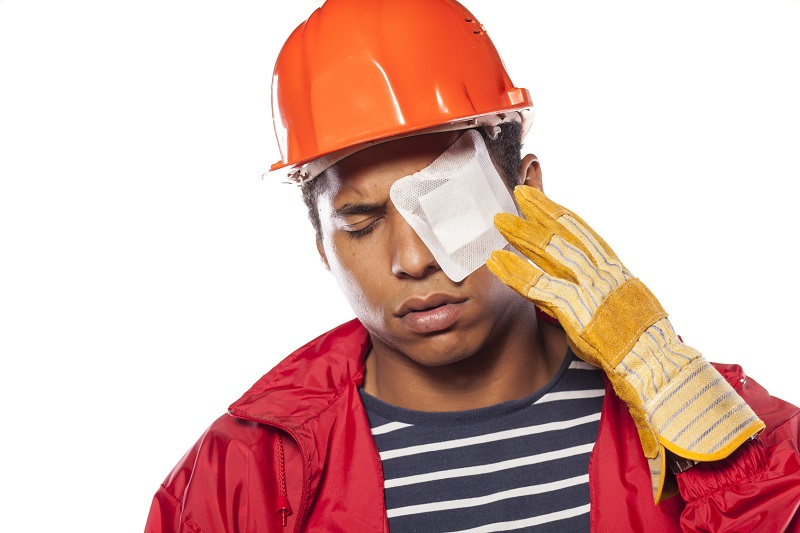KU-EHS August Safety Tip: Eye Injury Emergencies

What should be done in an eye emergency?
Seek medical attention as soon as possible following an injury, particularly if you have pain in the eye, blurred vision or loss of any vision. Several simple first aid steps can and should be taken until medical assistance is obtained.
First aid for chemicals in the eye:
- Immediately flush the eye with water for at least 15 minutes. Place the eye under a faucet or shower, use a garden hose, or pour water into the eye from a clean container.
- If you are wearing contact lenses, immediately remove them before flushing the eye.
- Do not try to neutralize the chemical with other substances.
- Do not bandage the eye.
- Seek immediate medical attention after flushing.
First aid for particles in the eye:
- Do not rub the eye.
- Try to let your tears wash the speck out, or irrigate the eye with an artificial tear solution.
- Try lifting the upper eyelid outward and down over the lower eyelid to remove the particle.
- If the particle does not wash out, keep the eye closed, bandage it lightly and seek medical care. Some particles, particularly metallic ones, can cause rusting spots on the eye if left untreated for several days. If you are unsure if the object is gone, do not delay medical care.
First aid for blows to the eye:
- Gently apply a cold compress without putting pressure on the eye. Crushed ice in a plastic bag can be placed gently on the injured eye to reduce pain and swelling.
- In cases of severe pain or reduced vision, seek immediate medical care.
- First aid for cuts and punctures to the eye or eyelid:
- Do not wash out the eye.
- Do not attempt to remove an object that is stuck in the eye.
- Cover the eye with a rigid shield, like the bottom half of a paper cup.
- Seek immediate medical care.